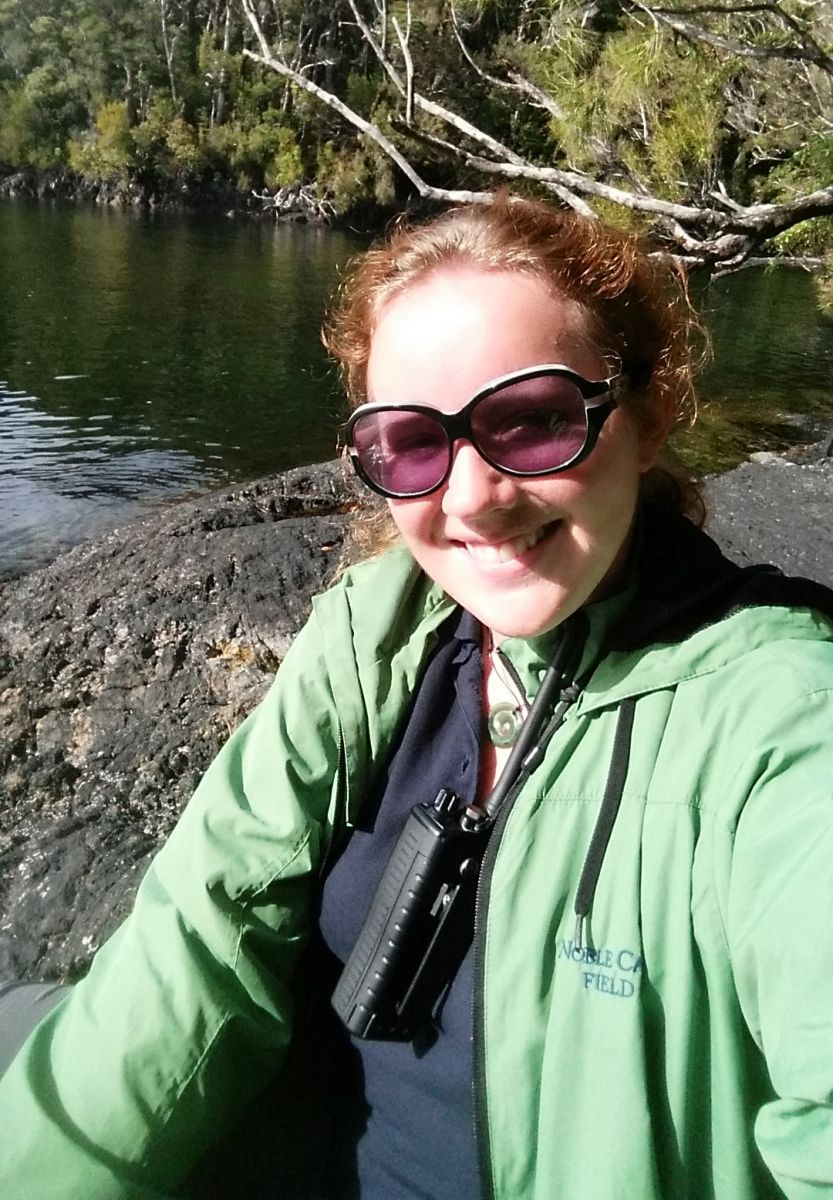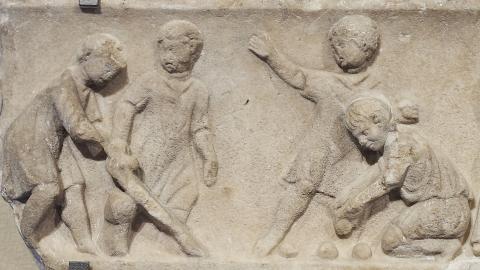funkem and victoriaaustenperry
June 7, 2021
“Think of the Children! The Reception of the Ancient World in Children’s Media” was the Women’s Classical Caucus panel at the most recent AIA/SCS meeting. We (Melissa Funke and Victoria Austen, co-organizers) conceived of this panel as a far-reaching conversation about how children have historically engaged with ancient Greece and Rome and how they continue to do so today. In choosing the papers for this panel, we had two primary concerns in mind: to think about how various media use ancient Greek and Roman material for education and play alike, and to use girlhood as a lens to reconsider reception in those media. While more traditional forms of literature, such as storybooks and poetry, were featured as an important aspect of this conversation, the presenters also addressed these issues in primary textbooks, video games, and web comics.
“Nationalism and Imperialism in Futures Past: Classical Reception in Louisa Capper's A Poetical History of England: Written for the Use of Young Ladies Educated at Rothbury-House School (1810),” by Kathryn H. Stutz

Kathryn’s paper examined the enduring influence of Louisa Capper’s A Poetical History of England on the choices made later in life by her adopted son, James Fitzjames. Although intended as a school text for children, especially girls, this poem shaped Fitzjames’ own poetry and the classical lens through which he viewed his participation in Arctic expeditions. She argued that, through his early exposure to classicizing narratives of empire, Fitzjames went on to shape his own persona as an Arctic explorer on a heroic quest.
“‘Puella est pulchra’: Misogyny, Slavery, and Modern Stereotypes in Latin Learning Resources,” by Alison John

Alison drew on her experience in the classroom, turning to Latin textbooks for primary students to question how these educational resources depict issues like enslavement and sexual assault. She tackled the idea of historical “authenticity” in these resources and how this is used as a justification to minimize the presence of female characters, arguing that centering girls and women in these narratives is, in fact, accurate. Alison also highlighted the contrast between “real” Latin and “made” Latin (e.g., as found in exercises created by the creators of textbooks), raising the question of whether modern textbook authors need to recapitulate the inequities of the Classical past in these pedagogical tools. Alison also articulated a key question for thinking through representations of the Classical world in children’s media: do we confront ancient inequities head on, sanitize them for a younger audience, or avoid them all together?
“Changing the Story and Rejecting Female Gender Roles in King’s Quest 4 (1988),” by Natalie Swain

Natalie’s paper was the first to articulate the idea of a character functioning as an avatar for children consuming various media. In her discussion of the 1980s video game King’s Quest 4, she offered a solution to the question that Alison John’s paper had introduced: should the challenging aspects of antiquity be confronted, sanitized, or entirely avoided? The game recontextualized the myth of Pandora by offering an empowered version of this character that in turn functions as an avatar for the player. The emphasis on storytelling in this game allowed for a new narrative that fostered a different kind of identification with characters from Classical myth than we’d seen so far, in which players could affect the outcome of Pandora’s story based on their own previous mythological knowledge.
WOW!!! Roberta Williams's work at Sierra is CRIMINALLY understudied by even people focusing on video games and this sounds truly exciting! The specific narrativity and interpellation in these point and click adventure games is crucial and interesting, especially through this lens https://t.co/0LQHuWVTjT
— Evan Lee, PhD (@ERobertLee) January 9, 2021
“Post-Patriarchal Pandoras for Very Young Readers,” by Rebecca Resinski

Rebecca turned to storybooks aimed at young children that also told the story of Pandora’s box. She began by discussing versions of the myth in children’s literature that reiterate both ancient and modern patriarchal structures, thus lending a disingenuous sense of timelessness to structures that are very much rooted in time and place. On a more hopeful note, Rebecca introduced us to Joan Holub’s and Victoria Turnbull’s versions of the Pandora myth, both of which strip away the ancient trappings of the story. Turnbull’s version in particular places Pandora in a post-apocalyptic setting and uses the story of her discovery of the box to find optimism in this narrative.
“Persephone Reclaimed? Assessing Romantic Retellings of the Rape of Persephone,” by Sierra Schiano

Sierra also addressed the idea of the “timeless” patriarchy in her paper on Young Adult receptions of the Persephone myth that strive to rehabilitate Hades and Persephone’s relationship, with a particular focus on the web comic Lore Olympus. She used the framework of intersectional feminism to highlight the ways in which Persephone is often assimilated into the ruling groups in these versions of the myth, typically at the expense of those still oppressed by these same groups. The challenge with receptions of myths that include sexual assault is centering the perspective of a character like Persephone and reclaiming the narrative. Can she ever be un-victimized without changing the story dramatically?
In the five papers on our panel, several patterns emerged that reflect larger issues within the broader study of children’s media. The first of these was how children in particular are encouraged to use characters they encounter in media directed at them as avatars for themselves. The second theme that arose in these papers was representation of darker themes from antiquity (e.g., enslavement and sexual assault) in children’s media and how they often avoid or sanitize these topics for an audience of children. Several of the papers explored how the process of adapting narratives to address modern concerns can reinforce ancient ideas; we were also introduced to receptions that were able to transcend patriarchal ideas, both ancient and modern. All of the papers ultimately pointed to the same question: what is at stake when we bring Greek and Roman antiquity into children’s media?
The lively discussion after the papers and on social media expanded our conversation to many forms of children’s/Young Adult media. Fan-art and fanfiction, in particular, were identified as areas of reception with many similar resonances to the media discussed in our panel:
During today's WCC panel hosted by @MelissaKAFunke and @Vicky_Austen, the question of fan art came up. I think this is really important, and should be considered alongside the pieces that are in museums. https://t.co/t1Mc1QSEcC
— Christian Lehmann (@BuffyAntiqua) January 10, 2021
Throughout these discussions, participants continually returned to the question that Alison John’s paper had highlighted: what is the best way to handle the harmful aspects of antiquity in children’s media? This developed into a conversation on how and when to introduce these ideas to children, with an acknowledgement that care ought to be taken regarding the children’s identities and experiences.
Passing on a mythical canon for children was in the background of all this discussion, with the lingering issue of how comprehensive children’s media (or media for any audience) needs to be in its representation of ancient Greece and Rome. As with all receptions of the ancient world, a consideration of meaning as shaped by the audience is essential for children’s media, while keeping in mind that ancient myth in particular can offer an imprimatur of value and authority to concerning ideas. Overall, the panel exceeded our expectations and demonstrated how productive children’s media can be as an avenue for thinking about wider debates on reception and approaching the classical canon. Perhaps the children are our future in Classics after all.
You can also find a summary of the panel in Victoria’s live-tweet thread from the event.
Header image: Children playing ball games, 2nd century AD. Image courtesy of Wikimedia Commons.
Authors



